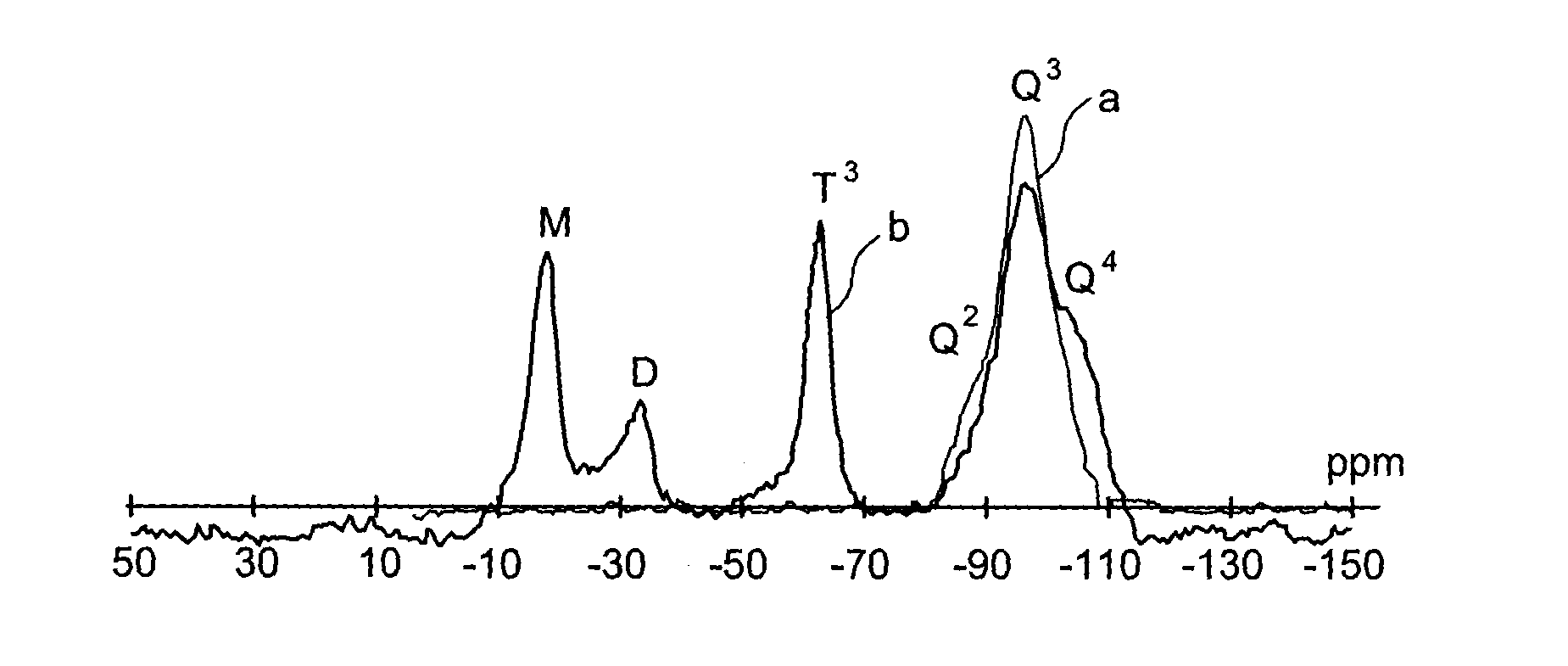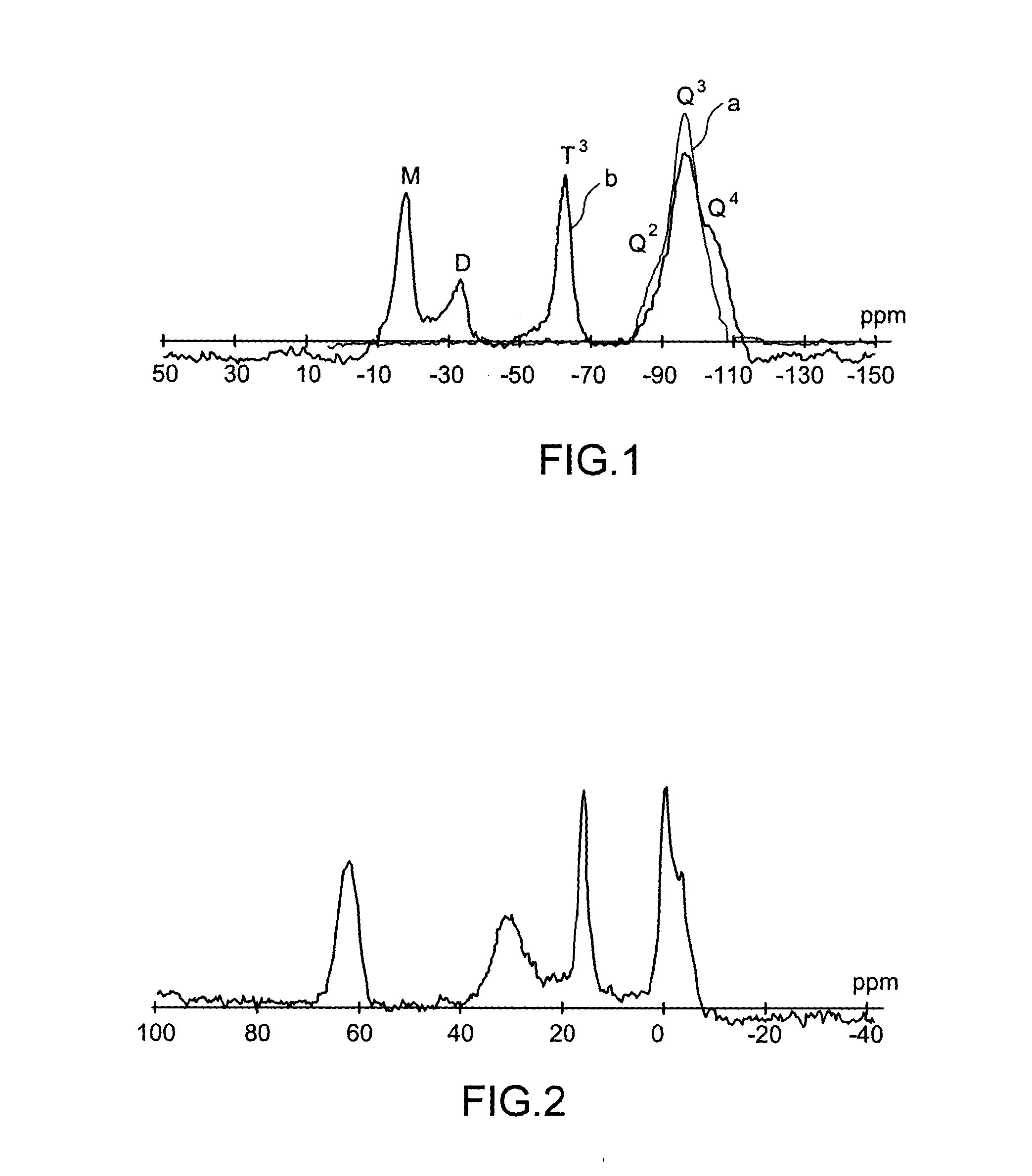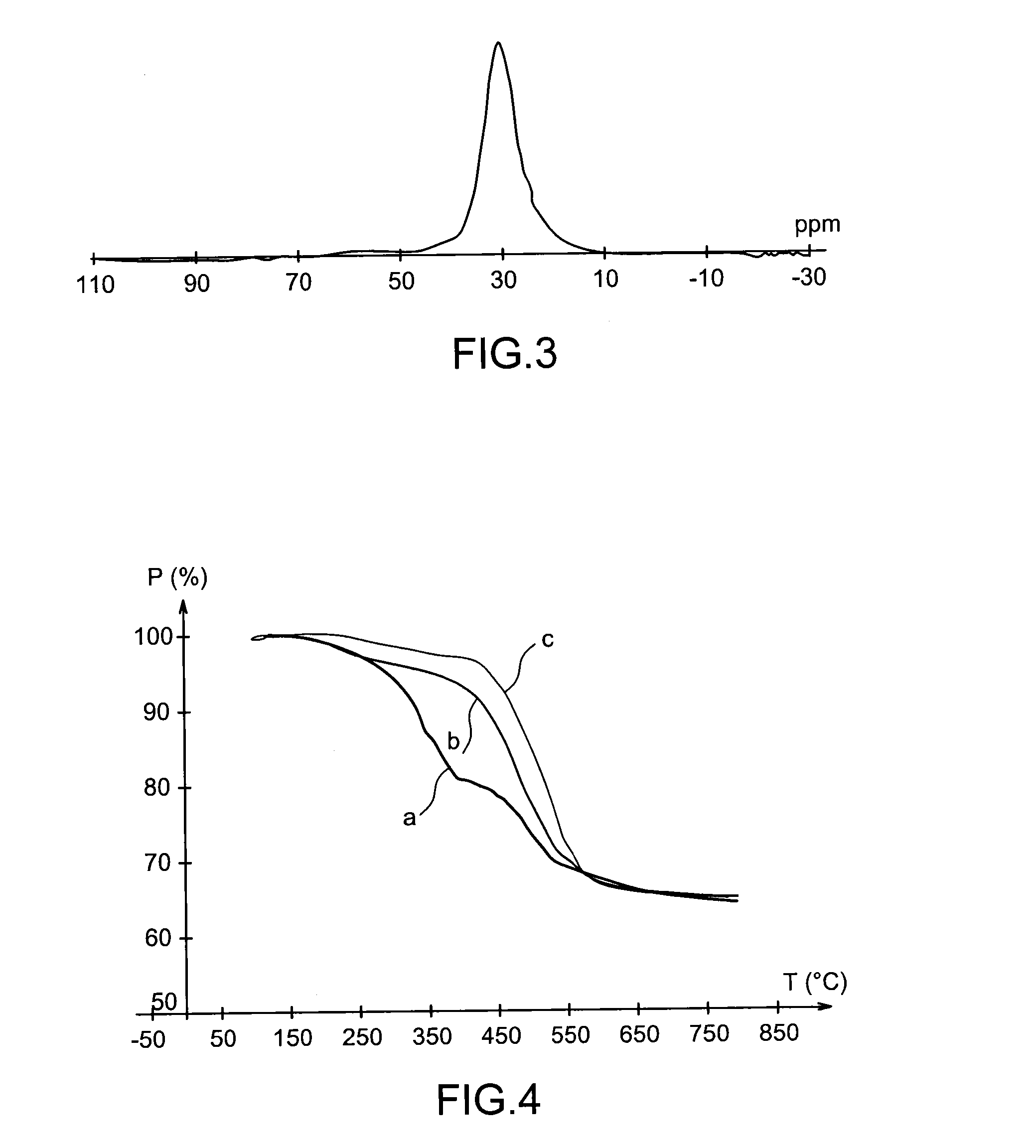Specific phosphonated copolymers and inorganic particles grafted by said copolymers
a technology of inorganic particles and copolymers, which is applied in the direction of ion-exchangers, chemistry apparatus and processes, electrochemical generators, etc., can solve the problems of insufficient pemfc applications, insufficient interest, and inconvenient marketing costs
- Summary
- Abstract
- Description
- Claims
- Application Information
AI Technical Summary
Benefits of technology
Problems solved by technology
Method used
Image
Examples
example 1
[0108]This example relates to the preparation of a polymer conforming to the invention resulting from the polymerisation of diethyl vinylphosphonate having the following formula:
from a base copolymer: poly(hydromethyl-co-dimethyl)siloxane having the following formula:
[0109]Diethyl vinylphosphonate (0.704 g; 4.3×10−3 mol) is added to the tube. In parallel, tris (pentafluorophenyl)borane (210 mg; 4.3×10−4 mol) is solubilised in toluene. The solution is then added to the tube. Next, pentadimethylsiloxane (0.190 g; 1.28×10−3 mol) is added. The temperature is then set at 50° C. About 15 minutes after adding the pentadimethylsiloxane, a strong release of gas is observed which starts to fade about 30 minutes later. Poly(hydromethyl-co-dimethyl)siloxane (1 g; 2.13×10−3 mol) is added at this precise moment. The reaction takes place for 16 hours at 85° C. On completion of the reaction, the reaction mixture is stored.
example 2
[0110]This example relates to the preparation of a polymer conforming to the invention resulting from the polymerisation of diethyl vinylphosphonate having the following formula:
from a base copolymer: poly(hydromethyl-co-dimethyl)siloxane of following formula:
[0111]Diethyl vinylphosphonate (0.704 g; 4.3×10 −3 mol) is added to the tube. In parallel, tris(pentafluorophenyl)borane (210 mg; 4.3×10−4 mol) is solubilised in toluene. The solution is then added to the tube. Next, pentadimethylsiloxane (0.190 g; 1.28×10−3 mol) is added. The temperature is then set at 50° C. About 15 minutes after adding the pentadimethylsiloxane, a strong gas release is observed which starts to fade about 30 minutes later. The poly(hydromethyl-co-dimethyl)siloxane (2 g; 4.26×10−3 mol) is added at this precise moment. The reaction takes place for 16 hours at 85° C. On completion of the reaction, the reaction mixture is stored.
example 3
[0112]This example relates to the preparation of a polymer conforming to the invention resulting from the polymerisation of diethyl vinylphosphonate having the following formula:
from a base copolymer: poly(hydromethyl-co-dimethyl)siloxane having the following formula:
[0113]The diethyl vinylphosphonate (0.704 g; 4.3×10−3 mol) is added to the tube. In parallel tris (pentafluorophenyl)borane (210 mg; 4.3×10−4 mol) is solubilised in toluene. The solution is then added to the tube. Next, pentadimethylsiloxane (0.190 g; 1.28×10−3 mol) is added. The temperature is then set at 50° C. About 15 minutes after adding the pentadimethylsiloxane, a strong gas release is observed which starts to fade about 30 minutes alter. The poly(hydromethyl-co-dimethyl)siloxane (4 g; 4.56×10−3 mol) is added at this precise moment. The reaction takes place for 16 hours at 85° C. On completion of the reaction, the reaction medium is stored.
PUM
| Property | Measurement | Unit |
|---|---|---|
| temperatures | aaaaa | aaaaa |
| temperatures | aaaaa | aaaaa |
| operating temperature | aaaaa | aaaaa |
Abstract
Description
Claims
Application Information
 Login to View More
Login to View More - R&D
- Intellectual Property
- Life Sciences
- Materials
- Tech Scout
- Unparalleled Data Quality
- Higher Quality Content
- 60% Fewer Hallucinations
Browse by: Latest US Patents, China's latest patents, Technical Efficacy Thesaurus, Application Domain, Technology Topic, Popular Technical Reports.
© 2025 PatSnap. All rights reserved.Legal|Privacy policy|Modern Slavery Act Transparency Statement|Sitemap|About US| Contact US: help@patsnap.com



